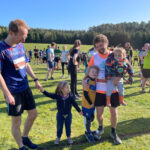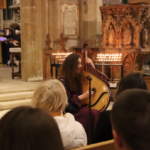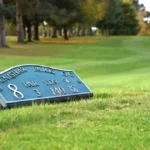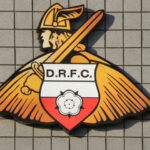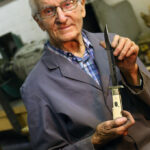Young stroke survivors are calling the FAST diagnosis into question after being turned away for not fitting the specified symptoms.
The acronym refers to symptoms commonly experienced by stroke victims and stands for face, arms, speech, and time, but can lead to misdiagnosis for patients who don’t always display these symptoms.
Survivors are instead asking for the abbreviation to be changed to BE-FAST, to include balance and eyes; symptoms more commonly associated with younger people who have strokes.
Lili Vachon, a 27-year-old stroke survivor and teacher, said: “I absolutely support the BE-FAST acronym. We’re constantly told about the FAST symptoms, but it was my balance and eyesight that were the huge signs that I was having a stroke.
“Adding those two factors to the acronym could be the difference between someone making a recovery and someone dying or being left with a disability.”
How can BE-FAST help
Strokes occur when a blockage or a bleed stops blood getting to your brain and the organ starts to die, which is why response times are vital to minimise damage.
Dr Deb Lowe, the NHS National Clinical Director for Stroke, said: “It’s very concerning that so many people might not realise that stroke is a medical emergency and that even less people say they don’t feel confident they could recognise if someone was having a stroke.”
While the NHS continues to rely on the FAST diagnostic criteria, they do acknowledge other stroke symptoms, including:
- Sudden loss of vision or blurred vision in one or both eyes
- Sudden weakness or numbness on one side of your body (including in your leg)
- Sudden memory loss or confusion
- Sudden dizziness, unsteadiness or a sudden fall, especially with any of the other signs

Graphic: The Stroke Association
Why is BE-FAST not used in the UK?
While some young stroke survivors would like more awareness to be brought to the less common signs of stroke, experts in the UK are reluctant to implement the BE-FAST acronym.
Dr Christopher Price, a professor of Stroke and Applied Health Research at Newcastle University, said: “The majority of people who have the ‘B’ and the ‘E’ symptoms also have ‘FAST’ symptoms. So actually, there’s very little to gain in adding in the B and the E.
“The additional value of adding the B and the E in is really quite small compared to the additional training you’d have to put the ambulance staff through and the complexity it adds to a public awareness campaign, which is always best to keep as simple as possible.”
Despite this, some young stroke survivors still believe there are benefits to using more all-encompassing acronyms.
Bridie Kirsopp, 29, from Leeds, had a stroke when she was 17. After showing symptoms including a severe headache, vomiting, blurred vision, and loss of balance, she was diagnosed with a stroke.
She said: “So many survivors are misdiagnosed or dismissed because they’re not showing classic symptoms. It happened to me 12 years ago and is still happening now.
“For me, the BE FAST model is a more modernised, inclusive criteria. It could be very beneficial and save a lot of lives.”
Why is it important to recognise a stroke
Response time and recognition of what a stroke is, regardless of the acronym used, is key according to experts.
Julia, a social media representative for the American Stroke Association, said: “We acknowledge that FAST does not account for all stroke warning signs, but it includes the most common warning signs and is widely regarded as the simplest to remember for the public.
“Whether it’s “The Suddens”, “FAST”, “BE-FAST.” or “BE-FASTER” or something else, all stroke warning sign mnemonics have value. Stroke advocates are welcome to use the one they prefer, because the best memory aid is the one you’ll remember.”





